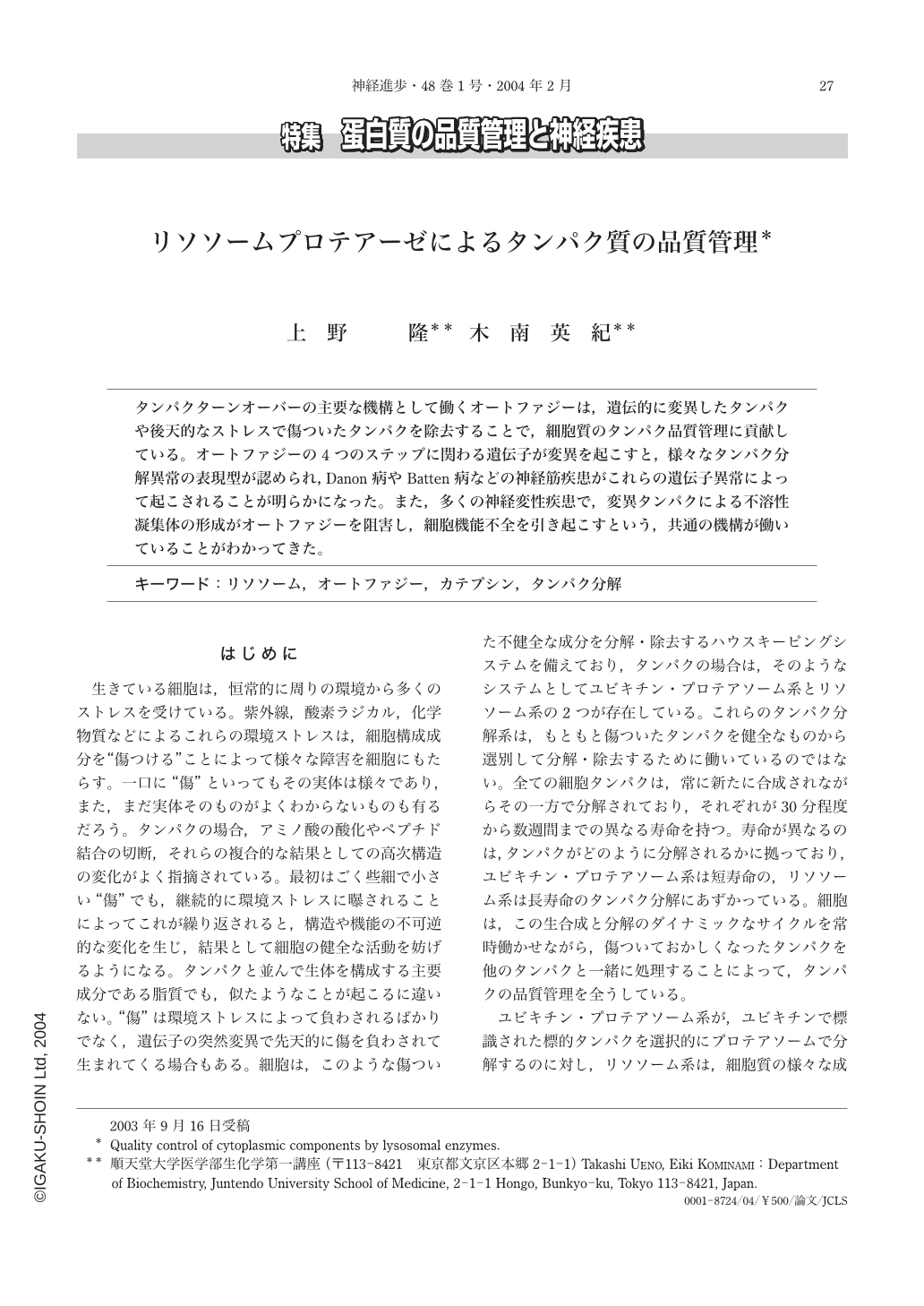Japanese
English
- 有料閲覧
- Abstract 文献概要
- 1ページ目 Look Inside
タンパクターンオーバーの主要な機構として働くオートファジーは,遺伝的に変異したタンパクや後天的なストレスで傷ついたタンパクを除去することで,細胞質のタンパク品質管理に貢献している。オートファジーの4つのステップに関わる遺伝子が変異を起こすと,様々なタンパク分解異常の表現型が認められ,Danon病やBatten病などの神経筋疾患がこれらの遺伝子異常によって起こされることが明らかになった。また,多くの神経変性疾患で,変異タンパクによる不溶性凝集体の形成がオートファジーを阻害し,細胞機能不全を引き起こすという,共通の機構が働いていることがわかってきた。
Autophagy, a process by which bulk cellular proteins are turned over via the lysosomal/vacuolar system, substantially contributes to the quality control of cytoplasmic components by removing aged or injured cell constituents that are formed in cells exposed to various stimuli and stresses. In a number of inherited neuromuscular diseases, aberrant autophagic protein turnover has been shown to play a substantial role in the progression of diseases. Some diseases(Danon disease and neuronal ceroid lipofuscinosis)have been demonstrated to be due to mutation of the genes directly involved in four elementary steps of autophagy. In most other neuromuscular diseases, the responsible genes are not directly relevant to autophagy. However, abnormal accumulation of autophagsomes and autolysosomes is frequently observed as a common symptom. One common mechanism underlying these diseases is that mutations cause conformational disorders of some particular proteins. The altered proteins have a strong tendency to form insoluble aggregates. These aggregates can be sequestered into autophagosomes as the substrates of autophagy, but they are resistant to lysosomal proteinases. The accumulation of these aggregates results in a block in autophagy.
(Received:September 16, 2003)

Copyright © 2004, Igaku-Shoin Ltd. All rights reserved.


